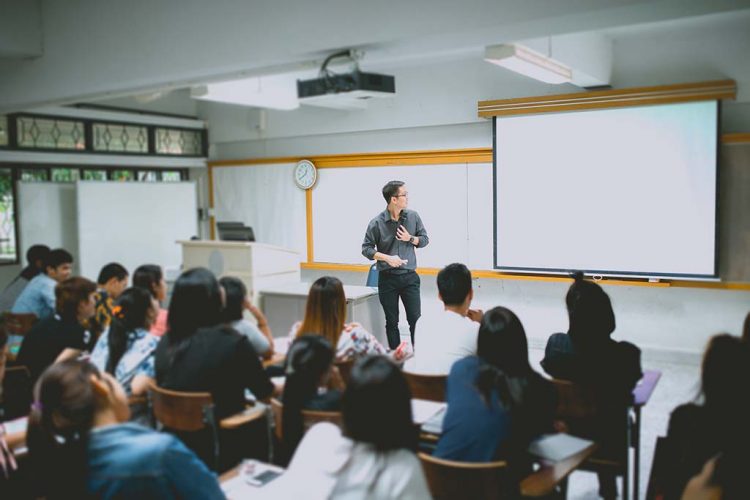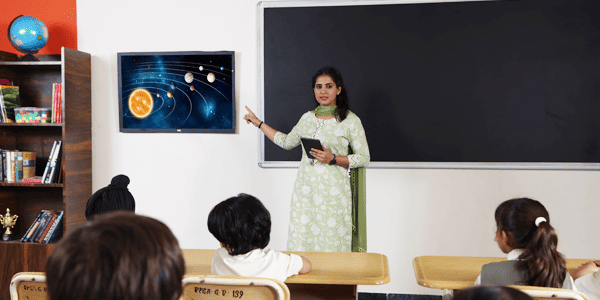Tailored Primary Science Tuition Singapore for Your Child’s Success
Tailored Primary Science Tuition Singapore for Your Child’s Success
Blog Article
A Comprehensive Overview to the Numerous Learning Techniques in Primary Science Instruction
The expedition of varied discovering approaches in key scientific research instruction presents a possibility for instructors to enhance trainee interaction and comprehension substantially. By examining hands-on knowing techniques, inquiry-based techniques, and joint techniques, we can determine effective techniques that provide to numerous discovering styles.

Hands-On Understanding Strategies
Hands-on learning techniques play an essential duty in main science guideline, engaging students in active exploration and experimentation. These techniques permit learners to communicate straight with phenomena and materials, cultivating a deeper understanding of scientific ideas. By utilizing manipulatives, versions, and real-life experiments, instructors develop an atmosphere where students can observe, hypothesize, and check their concepts.
Such strategies not just boost comprehension however also grow critical thinking and analytic abilities. When students join activities like building basic devices, planting seeds, or conducting chain reactions, they are encouraged to ask questions and look for responses with their very own monitorings. This experiential approach assists to demystify intricate scientific concepts, making them a lot more relatable and available.
Moreover, hands-on knowing promotes collaboration amongst peers, as pupils frequently operate in groups to conduct experiments or share findings. This teamwork not just improves their understanding experience however also establishes important social skills. Eventually, integrating hands-on strategies in main science direction fosters a long-lasting love of knowing and inquisitiveness about the environment, laying a strong foundation for future academic searches in science and beyond.
Inquiry-Based Discovering
Inquiry-based learning is an educational technique that encourages pupils to ask inquiries, explore sensations, and build their very own understanding of clinical concepts. This approach shifts the focus from conventional teacher-led direction to a much more student-centered experience, where learners take the campaign in their instructional trip. By promoting curiosity, inquiry-based knowing advertises deeper involvement with the product, enabling students to discover topics in a purposeful context.
In practice, this technique often includes hands-on experiments, monitorings, and critical thinking activities that line up carefully with the clinical method. Trainees are encouraged to formulate hypotheses, layout examinations, and analyze information, which cultivates necessary abilities such as problem-solving and analytical reasoning. The duty of the instructor in this framework is to promote exploration, directing students via the query procedure while motivating independent idea and partnership.
In addition, inquiry-based learning nurtures a feeling of possession over the knowing procedure, inspiring trainees to pursue expertise actively. This method not just improves understanding of scientific principles however additionally promotes a lifelong love for discovering, gearing up pupils with the skills essential to navigate a progressively complex globe.
Collaborative Discovering Approaches
Joint knowing techniques encourage trainees to participate in meaningful interactions with peers, fostering a shared responsibility for their educational results. In primary scientific research instruction, these techniques urge learners to collaborate to discover clinical principles, solve troubles, and conduct experiments (primary science tuition Singapore). By taking part in group activities, trainees can take advantage of diverse point of views, allowing for richer understanding and retention of scientific understanding
One secret aspect of joint understanding is the focus on interaction abilities. Students have to articulate their thoughts, listen proactively to others, and bargain ideas, every one of which are important competencies in both scholastic and real-world contexts. This social interaction not only boosts their understanding of clinical principles but also advertises team effort and dispute resolution abilities.
When pupils see the worth of their contributions within a group, they are more likely to take possession of their learning trip. On the whole, including collaborative knowing approaches in primary scientific research instruction cultivates a vibrant knowing atmosphere that prepares students for future academic and social difficulties.
Modern Technology Combination in Scientific Research
The combination of technology in key scientific research direction enhances learning experiences by offering innovative devices and sources that sustain various training methods, consisting of joint understanding - primary science tuition Singapore. Making use of electronic systems, simulations, and interactive applications permits students to engage deeply with scientific concepts, helping with a much more hands-on method to knowing
Virtual labs, for example, enable learners to carry out experiments securely and effectively, promoting inquiry-based knowing. These devices can replicate real-world clinical circumstances, permitting pupils to picture complicated procedures that would certainly be tough to duplicate in a typical classroom setup. In addition, modern technology cultivates interaction and collaboration amongst pupils, as they can share findings and work with each other on projects through on the internet read this article systems.
In addition, multimedia presentations and instructional videos can enhance lessons by catering to varied understanding styles, making abstract concepts more obtainable. Data analysis devices also encourage trainees to gather and translate clinical information, reinforcing vital thinking abilities. Overall, the strategic consolidation of technology in key scientific research guideline not just improves interaction but also prepares trainees for a technologically advanced society, furnishing them with essential skills for future scientific ventures.
Separated Direction Strategies
Separated guideline approaches are necessary for dealing with the varied requirements of students in main science education. These strategies make it possible for teachers to tailor their training techniques to accommodate varying capacities, passions, and finding out designs within the classroom. By utilizing distinguished direction, teachers can create a comprehensive environment that cultivates involvement and boosts understanding of clinical ideas.
One efficient strategy is to utilize adaptable organizing, which allows students to team up with peers at similar ability degrees or with varying perspectives. This method motivates peer understanding and promotes essential reasoning. Furthermore, using choices in assignments can encourage trainees, allowing them to select projects that reverberate with their interests while still fulfilling curricular objectives.
Moreover, including tiered assignments is one more valuable strategy. Deliberately tasks with differing degrees of complexity, teachers can make certain that all trainees are properly tested, no matter of their proficiency. Utilizing formative analyses to determine understanding additional enables instructors to readjust their training approaches dynamically, guaranteeing that each learner receives the support they need.
Ultimately, implementing distinguished guideline approaches in main scientific research education and learning not only boosts trainee knowing end results however also go now grows an interest for scientific research, preparing students for future scholastic pursuits.

Final Thought
In summary, efficient key science Click This Link guideline demands a complex technique that includes hands-on knowing, inquiry-based techniques, and joint methods. The combination of innovation and differentiated instruction additionally deals with varied learning styles, promoting a setting for expedition and critical reasoning. By carrying out these methods, teachers can enhance student involvement and comprehension, eventually nurturing a long-lasting interest for science and query. Such detailed approaches are vital for establishing educated and curious future researchers.
The expedition of varied understanding approaches in key science instruction presents an opportunity for educators to enhance pupil involvement and understanding considerably.Hands-on understanding techniques play a crucial role in main science instruction, involving trainees in active exploration and testing.Inquiry-based knowing is an educational method that urges students to ask concerns, check out phenomena, and create their very own understanding of clinical ideas.Joint discovering strategies equip trainees to involve in significant communications with peers, promoting a common duty for their academic results. On the whole, integrating joint knowing techniques in primary scientific research direction grows a dynamic knowing environment that prepares students for future scholastic and social challenges.
Report this page